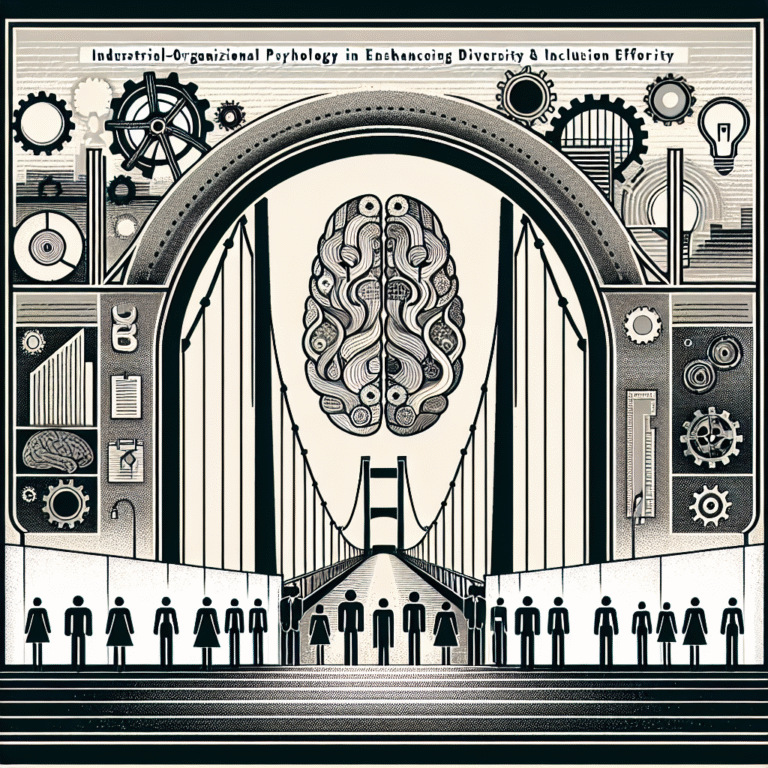
Introduction
In today’s fast-paced and ever-evolving business landscape, one truth stands paramount: an organization’s culture can make or break its trajectory. As companies navigate through technological advancements, changing consumer behaviors, and a diverse workforce, the question emerges—how can organizations transform their culture to fuel sustainable growth and success? This article delves into the transformational journey of culture as the key to successful organizational development, exploring unique case studies, actionable insights, and vital strategies to create a thriving organizational environment.
Understanding the Importance of Organizational Culture
What is Organizational Culture?
Organizational culture is the shared values, beliefs, and practices that shape the behavior of members within an organization. It encompasses everything from communication styles to decision-making processes, and its influence is profound. A strong, positive culture can lead to increased employee satisfaction, higher productivity, and ultimately, enhanced business outcomes.
Evolution of Organizational Culture
Understanding that culture isn’t static is crucial. From the autocratic systems of the past to today’s inclusive and collaborative frameworks, the evolution of organizational culture reflects broader societal changes. Adapting to these shifts is essential for companies aiming to thrive in an increasingly globalized environment.
The Role of Leadership in Transforming Culture
Visionary Leadership
Visionary leaders are instrumental in driving cultural change. They set the tone for the organization by articulating a clear vision that aligns with core values. For instance, a study from Harvard Business Review highlights how Unilever’s CEO, Alan Jope, prioritized sustainability as a core value. By doing so, he transformed not only the company’s culture but also its market positioning, making it a leader in sustainability in the consumer goods sector.
Empowering Employees
Empowerment is a critical component of a transformative culture. Leaders must foster an environment where employees are encouraged to share their ideas and take initiative. Google’s Project Aristotle illustrates this concept. The project aimed to understand what makes teams successful. The findings revealed that psychological safety—where team members feel comfortable expressing their thoughts—was vital. This insight has led Google to re-create its culture to prioritize openness and innovation.
Key Strategies for Successfully Transforming Culture
1. Assessing Current Culture
Before embarking on a cultural transformation journey, organizations must evaluate their existing culture. This can be achieved through surveys, interviews, and focus groups. Tools such as the Organizational Culture Assessment Instrument (OCAI) can provide valuable insights.
2. Defining Core Values
What are the organization’s core values? Clearly defining these values provides a foundation for transformation. A case in point is Zappos, a company renowned for its customer service. Zappos emphasizes ten core values, such as "Deliver WOW Through Service." This clarity helps employees make decisions that align with the organizational mission.
3. Communicating the Vision
Communication is fundamental. Leaders must continuously communicate the vision for change and the reasons behind it, utilizing various channels to reach all employees effectively. Netflix exemplifies this approach by regularly sharing its culture memo, outlining its expectations and values, ensuring transparency throughout the organization.
4. Modeling Desired Behaviors
Leaders must embody the changes they wish to see. If collaboration is a desired trait, leaders should actively demonstrate collaborative behaviors. Microsoft CEO Satya Nadella’s emphasis on a "growth mindset" has transformed the company’s culture, encouraging learning and adaptation throughout its ranks.
5. Measure Progress and Adapt
Transformation is an ongoing process that requires consistent assessment. Utilize key performance indicators (KPIs) and feedback loops to measure cultural progress. For instance, Salesforce regularly evaluates its employee satisfaction scores and cultural health metrics to make necessary adjustments.
Case Studies Highlighting Successful Cultural Transformations
1. Adobe: Embracing a Culture of Feedback
Adobe, the software giant, has undergone a cultural revolution by shifting away from traditional annual reviews to a continuous feedback model. This transformative step has fostered a culture of openness, where employees feel valued and empowered to grow. The results are evident; Adobe has seen significant increases in employee engagement and retention rates.
Analysis:
Adobe’s shift to continuous feedback showcases how reimagining performance evaluations can instigate broader cultural changes. The focus on real-time communication reinforces trust and drives performance.
2. Patagonia: Commitment to Sustainability
Patagonia provides a prime example of a company deeply rooted in its culture of environmental responsibility. By integrating sustainability into every aspect of its operations, from product design to corporate governance, Patagonia has established itself as a leader in ethical business practices.
Analysis:
Patagonia’s unwavering commitment to its values resonates with consumers and employees alike. This cultural alignment not only enhances brand loyalty but also attracts talent who share similar beliefs.
3. IBM: Reinventing Culture Through Diversity
IBM has realized the importance of diversity as a crucial element of its culture. Through dedicated initiatives aimed at fostering inclusivity, IBM has transformed its workforce to embrace a multitude of perspectives. The initiative has led to enhanced creativity and innovation within the company.
Analysis:
IBM’s emphasis on diversity reflects a broader trend crucial to modern organizational culture. A diverse workforce leads to varied viewpoints, which can spark innovation and drive better decision-making.
The Benefits of Transforming Culture
Enhanced Employee Engagement
A positive organizational culture increases employee engagement, leading to higher productivity and retention rates. When employees feel aligned with the company’s values, their commitment rises.
Improved Customer Satisfaction
Companies with a strong culture often see improved customer satisfaction. Employees who believe in their organization’s mission are more likely to deliver exceptional service, positively affecting customer relationships.
Innovation and Adaptability
A transformational culture fosters an environment conducive to innovation. Employees are more likely to embrace change and contribute creative solutions when they feel safe and empowered.
Superior Organizational Performance
Ultimately, a thriving culture leads to superior business performance. Companies that prioritize transforming culture often enjoy robust financial health, illustrating culture’s impact on the bottom line.
Conclusion
Transforming culture: the key to successful organizational development is more than just a phrase—it is a guiding principle for thriving in today’s competitive landscape. The journey requires commitment, vision, and strategic action, but the rewards are profound. By fostering an environment that prioritizes shared values, continuous feedback, and inclusivity, organizations can unlock their full potential and achieve lasting success.
Motivational Takeaway
As you embark on your journey of cultural transformation, remember that every small step counts. Cultivating a positive culture is not an overnight process; it requires persistence and collaboration. Embrace the challenge, and watch as your organization flourishes.
FAQs
1. What is organizational culture?
Organizational culture refers to the shared values, beliefs, and practices that define how employees behave within an organization.
2. Why is transforming culture important?
Transforming culture is crucial for fostering employee engagement, driving innovation, and improving overall business performance.
3. How can leaders drive cultural transformation?
Leaders can drive transformation by clearly communicating a vision, modeling desired behaviors, and empowering employees.
4. What are some common challenges in transforming culture?
Common challenges include resistance to change, lack of clear communication, and insufficient involvement from leadership.
5. How do I measure cultural change?
Cultural change can be measured through surveys, performance metrics, and employee feedback mechanisms to gauge engagement and alignment with core values.
With these insights and strategies in mind, you are now equipped to embark on the journey of transforming culture: the key to successful organizational development. Remember, the path to cultural transformation is an evolving journey, and each moment contributes to a brighter, more successful future.


















